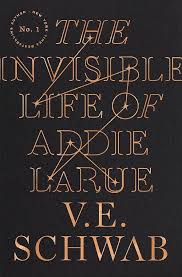Chapter VII
byChapter VII begins on a hot and oppressive morning in Venice, Italy, on July 29, 1806, where Addie LaRue finds herself waking in silk sheets beside Matteo. The heat of the Venetian summer is unbearable, yet it feels almost insignificant in comparison to the internal coolness that defines Addie’s existence. Her life is marked by a curse that renders her invisible to those she meets, causing her to be forgotten as soon as she leaves their presence. This condition, while offering her a certain freedom from attachment, also leaves her in a state of perpetual isolation. As she lies next to Matteo, who seems entirely unbothered by her presence, Addie can’t help but reflect on the paradox of her situation—the freedom of being forgotten yet also the profound loneliness that comes with it. The day unfolds quietly, a rare moment where she is able to exist in the calm of the moment, with no immediate need to leave or be remembered.
Matteo’s actions contrast sharply with Addie’s curse. While she will forever remain a stranger to him, Matteo, who is completely engrossed in the process, draws her with intent and focus. His charcoal sketch serves as a fleeting moment of recognition, an attempt to capture her essence on paper, even though he will not remember it or her once the encounter is over. In that moment, Addie watches as he carefully renders her likeness, and she begins to wonder about the nature of memory and impermanence. His drawing doesn’t just capture her physical form, but it also becomes a symbol of something greater: the idea that there may be some way to leave an impression on the world, even if it is only in a moment’s glimpse. As the artist draws, he unknowingly creates a mark of permanence in a world where her very existence is an ever-changing blur to those she encounters.
Addie’s reflections continue as she plays along with the illusion of being remembered by Matteo, allowing him to believe in the fleeting connection they share. She thinks about the nature of his drawing, about how, despite the curse that erases her from the minds of those she meets, this artwork may be a lasting representation of her in some form. Unlike memories, which fade from people’s minds once she leaves their presence, an idea—such as the image Matteo has captured—can endure beyond her. The realization stirs something deep within her. Perhaps, in a way, ideas are immune to the erosion caused by her curse. Even if Matteo will forget her, the image he has created of her will persist, allowing her to exist in a tangible form in his memory, even if his memory of her fades. The notion that there may be a way for her to leave a lasting imprint on the world, through something as simple as a drawing, offers Addie a new sense of hope. It sparks a glimmer of possibility that there is, after all, a way to find permanence, even if it’s not in the form of memories.
As Addie prepares to leave, she shares a final, quiet exchange with Matteo, one that underscores the bittersweet nature of their brief encounter. Though their connection is fleeting, the act of him sketching her becomes a metaphor for the temporary yet meaningful moments that define human existence. Even in a life that feels like it’s slipping through her fingers, Addie finds a subtle form of permanence in the artwork, even if it is not of her actual self but rather the idea of her. The realization settles in her heart that while her curse may make her physically invisible to others, ideas, once planted, can live on in ways that transcend time and memory. The drawing, now in Matteo’s hands, symbolizes a quiet rebellion against the forces of erasure she has faced for centuries. It is a testament to the fact that something can endure, even when its source is forgotten. As she leaves the room, Addie looks back at the drawing, contemplating the ways in which she might continue to leave traces of herself in the world, even as she remains invisible to those who would otherwise encounter her. The sunset over Venice’s canals serves as a perfect backdrop to this realization, casting a warm, golden light over the city and mirroring the fleeting yet significant connection that has sparked something within her—a new understanding of the resilience of ideas over the transience of memory.


